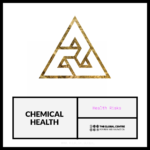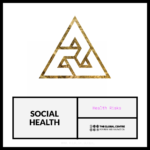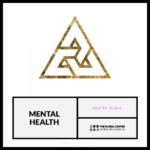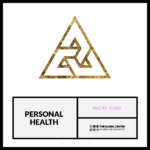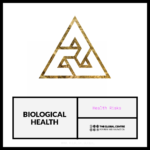The Nexus Reports provide comprehensive evaluations of country-specific risks and opportunities, focusing on biodiversity, ecosystem services, climate change vulnerabilities, socio-economic risks, the food-water-energy nexus, and exponential technologies. Drawing on authoritative sources, these reports offer tailored policy recommendations, detailed analyses, and practical case studies, integrating global scientific research to manage risks and drive sustainable development
Nexus Observatory
Health Risks
Welcome to GCRI’s Health Risks Nexus, where multiconstellation satellite feeds, NE based analytics, and AI/ML insights converge to transform how organizations tackle pandemics, chronic diseases, healthcare infrastructure, and environmental exposures. By synthesizing real-time Earth observation, parametric finance triggers, and integrated policy frameworks, we empower stakeholders—from public agencies and corporate HR teams to hospital networks and community NGOs—to identify emerging threats, mobilize rapid interventions, and secure long-term health resilience. With tailored course-based cohorts and dynamic skill-building, GCRI propels your teams to drive innovative health solutions, shape evidence-based governance, and champion the well-being of communities worldwide
Satellite Fusion
Consolidates multi-constellation satellite streams into a unified health surveillance layer. Deploys robust AI workflows to detect disease vector hotbeds, pollution spread, or critical supply chain gaps. Boosts cross-sector vigilance from region-wide outbreaks to localized crises needing rapid and AAP interventions
Hyperspectral Insight
Captures high-fidelity spectral data across diverse sensor bands for in-depth health analytics. ML-driven processes reveal hidden indicators of soil contamination, water quality threats, or zoonotic vectors. Enables preemptive alerts on pathogen proliferation, chemical hazards, or resource deficits affecting healthcare
GeoAI Modeling
Applies deep learning with GIS data to chart evolving health risk patterns across varied geographies. Forecasts disease emergence, sanitation voids, or socio-environmental stressors through multi-scenario planning. Steers integrated strategies for robust community health, resource equity, and evidence-based policy
Parametric Triggers
Utilizes NE-based hazard forecasting to define automated thresholds for disease spikes or infrastructure strains. Releases instant funding or emergency calls when critical health metrics surpass safe margins. Empowers agile coordination of preparedness, interventions, and public defenses
Digital Twins
Constructs immersive 3D models of hospitals, clinics, or entire health systems in real time. Fuses satellite data, local sensors, and NE simulations to stress-test outbreaks or supply chain disruptions. Informs strategic facility planning, resource allocation, and large-scale healthcare resilience
Innovation Labs
Provides specialized cohorts where teams leverage NE analytics for groundbreaking health solutions. Incorporates advanced parametric finance methods with near-real-time disease tracking pipelines. Grants GCRI-certified credentials confirming high-level capability in health risk intervention
Multisensor Mosaics
Blends radar, optical, and thermal satellite captures into a unified health-oriented composite. Automated ML routines highlight pollution plumes, water contamination, or crowding patterns. Elevates hospital EHS audits, compliance checks, and cross-agency health reporting with up-to-date spatio-temporal intelligence for anticipatory action
Edge-Cloud Synergy
Runs AI-driven diagnostics both at remote satellite edges and NE cloud clusters for optimal data flow. Issues instant alerts for anomalous disease vectors or facility overloads, while deeper analytics unfold in the cloud. Reduces latency, optimizes storage, and scales adaptive responses through balanced edge-cloud integration
Anomaly Tracking
Applies time-series ML on historical Earth-observation archives to unmask abrupt shifts in health-critical areas. Flags contamination, infrastructure failures, or epidemiological upticks for immediate resolution. Enables multi-layer correlation of healthcare data, socio-economic factors, and parametric triggers for swift relief
Trusted By World Leaders
Our leadership is earned through proactive, cutting-edge solutions and initiatives that tackle urgent challenges while balancing immediate impact with long-term sustainability. Strengthened by strategic partnerships with global powerhouses, GCRI sets a new standard for protection and progress in an era of unprecedened risks and opportunities

Our National Working Groups (NWGs) converge to shape a future defined by resilience , innovation , and collaboration. By uniting diverse perspectives through a seamless hybrid model, we ignites breakthrough innovations and fosters dynamic partnerships that secure a brighter, more sustainable future for all
Unlocking the Power of Spatial Finance 🌌 for Disaster Readiness 📡
Transforming risk management by integrating DRR, DRF, and DRI into a seamless, proactive system. Leveraging cutting-edge geospatial analytics and innovative financial triggers, NE enables real-time insights and rapid resource mobilization to build resilient communities and drive sustainable growth
Pandemic Preparedness & Infectious Disease Surveillance
GCRI melds NE-lab scenario modeling, satellite-based crowd dynamics, and AI-driven outbreak mapping to gauge transmission surges. Parametric thresholds unlock emergency funds once infection rates breach safe margins, ensuring swift vaccine distribution or contact tracing expansions. Corporate or government cohorts receive specialized training to orchestrate multi-stakeholder alignments, bridging epidemiology, logistics, and crisis communications
One Health & Zoonotic Management
Recognizing that human, animal, and environmental health are intertwined, GCRI merges Earth observation of wildlife habitats with NE-based disease analytics. ML-driven detection pinpoints emergent zoonotic threats at farm or forest interfaces, activating parametric triggers for vaccine stockpiling or biosecurity ramp-ups. Tailored cohorts equip stakeholders with holistic frameworks to prevent outbreaks at the source
Telehealth & Digital Medicine
Bridging real-time patient data with NE-lab analytics, GCRI fosters telehealth solutions that dynamically adapt to local risk signals, from pandemic spikes to resource bottlenecks. AI-based triage systems expedite remote diagnosis, while parametric triggers sustain e-health expansions under stress conditions. Course-based cohorts help providers, insurers, and regulatory bodies adopt integrated telemedicine with advanced data privacy and network security
Environmental Exposure & Pollution Control
Chemical spills, toxic runoffs, and airborne pollutants degrade community health. GCRI’s multisensor mosaics detect anomalies—industrial effluents, smog intensities—while parametric expansions enforce swift cleanup or penalty coverage. Corporate risk teams gain advanced insight through specialized courses that integrate environmental compliance, real-time sensor monitoring, and robust public engagement for early intervention
Mental Health & Psychosocial Support
Socio-economic stressors, climate anxieties, and global crises contribute to rising mental health burdens. GCRI’s NE-lab scenario planning merges demographic data with Earth observation on disruptions to assess psychosocial vulnerability. Parametric finance solutions can expand counseling or tele-therapy coverage in community hotspots. Corporate cohorts learn to incorporate mental health resilience into broader ESG frameworks
Climate-Health Nexus
As climate extremes intensify heat morbidity, vector-borne diseases, and waterborne outbreaks, GCRI’s NE-lab merges rainfall trends, temperature readings, and public health data for predictive hot-spot detection. Parametric finance solutions expedite relief for communities grappling with heat waves, pollution peaks, or catastrophic floods. Course-based programs educate corporate EHS teams and public health officials in co-creating climate-resilient strategies
Healthcare Infrastructure Resilience
Hospitals and clinics face disruptions from natural disasters, cyber incidents, or supply chain collapse. GCRI’s NE-lab digital twins simulate meltdown scenarios—flooded ICUs, power grid failures—enabling robust contingency plans. Parametric coverage ensures immediate capital injection to restore essential services. Corporate or public sector participants in GCRI’s capacity-building programs learn to embed resilience and continuity in their health facility designs
Healthcare Supply Chain Security
Pharmaceutical shortages, medical device bottlenecks, and disruptions in cold-chain logistics jeopardize patient care. GCRI’s NE-lab synergy merges trade route intelligence, Earth observation for port operations, and ML-based anomaly tracking to mitigate supply chain vulnerabilities. Parametric triggers unlock emergency stock deployment or alternative route funding. Cohorts focus on building agile supply chain frameworks that withstand global shocks
Health Data Privacy & AI Ethics
As AI-based diagnostics and NE-driven analytics expand, safeguarding patient data and ensuring algorithmic fairness become paramount. GCRI merges HPC-level cryptography with parametric liability coverage to deter data breaches. Dedicated training modules help healthcare stakeholders navigate regulatory landscapes, build ethical AI pipelines, and balance innovation with rigorous patient confidentiality standards
Community-Based Health Governance
Strengthening local capacities ensures health interventions are inclusive and sustainable. GCRI fosters multi-stakeholder platforms, bridging parametric expansions with daily Earth observation triggers to guide community clinics, mobile outreach, or vaccination campaigns. Skills development programs empower local health workers to interpret NE dashboards and co-develop solutions reflecting on-the-ground realities—delivering lasting impact in underserved regions
Future Innovation Labs
Innovation Lab
Discover;
Learn;
Build;
We support innovation, collaboration and knowledge-sharing amongst our members, partners and the broader research, development, and education communities. Our WILPs streamline the identification, mitigation, and evaluation of Risks, followed by the optimal use of GRIx to tackle Issues and manage adverse impacts. They provide secure network platforms that enable citizens to participate in MPM and use iVRS to report risks and values anywhere. Risk Pathways deliver out-of-the-box CRS functionality to meet institutional requirements, including SCF taxonomies for digital-green skills, compliance frameworks and real-time validation systems. They help members and QH stakeholders with DICE to navigate essential resources and find the right levers across the public-private-planet landscape.
MPM
Integrated pathways for existing national portfolios on the right to inclusive education, skills development, and career mobility through LLL for all
CRS
Rewarding participation with utility value across the network to increase interoperability and career mobility
DICE
Next-generation of internet for risk and innovation in pluralistic societies
GRIx
Open source standard indexing system for linked open data set about global risk and humanitarian crisis.
iVRS
Stakeholder engagement and reporting mechanism for Environmental, Social and Governance (ESG) risks and impacts
SCF
Frameworks, skills taxonomies, competencies and policies for the twin digital-green transition
Research
0%
Design
0%
Innovation
0%
Acceleration
0%
Policy
0%
Chemical Health Risk
7 Steps
- Join “Citizen Science” Streams
- Complete the lesson Introduction to Chemical Health
- Unlock Health Issues
- Publish a proposal on Chemical Health Risks
- Reach Health Impact Assessments (HIA) Level I
- Reach Environmental Impact Environmental Impact Assessment (EIA) level I
- Join Hackahons
Social Health Risks
8 Steps
- Join “Citizen Science” Streams
- Complete the lesson Introduction to Social Health
- Unlock Health Risks
- Publish a proposal on Social Health Risks
- Reach Health Impact Assessments (HIA) Level I
- Reach Social Impact Assessment (SIA) Level I
- Reach Health Impact Assessments (HIA) Level I
- Join Hackathons
Mental Health Risk
8 Steps
- Join “Citizen Science” Streams
- Complete the lesson Introduction to Mental Health
- Unlock Health Issues
- Publish a proposal on Mental Health Risks
- Reach Health Impact Assessments (HIA) Level I
- Reach Social Impact Assessment (SIA) Level I
- Reach Environmental Impact Assessment (EIA) level I
- Join Hackathons
Personal Health Risks
8 Steps
- Join “Citizen Science” Streams
- Complete the lesson Introduction to Personal Health
- Unlock Health Issues
- Publish a proposal on Personal Health Risks
- Reach Health Impact Assessments (HIA) Level I
- Reach Environmental Impact Assessment (EIA) level I
- Reach Social Impact Assessment (SIA) Level I
- Join Hackathons
Biological Health Risk
7 Steps
- Join “Citizen Science” Streams
- Complete the lesson Introduction to Biological Health
- Unlock Health Risks
- Publish a proposal on Biological Health Risks
- Reach Health Impact Assessments (HIA) Level I
- Reach Environmental Impact Assessment (EIA) level I
- Join Hackathons

